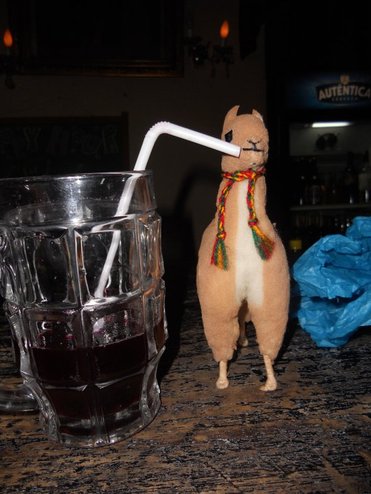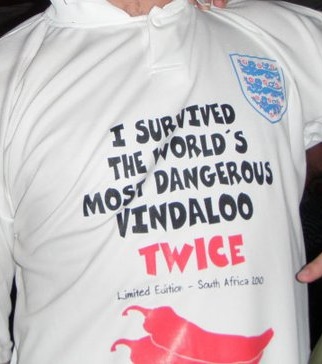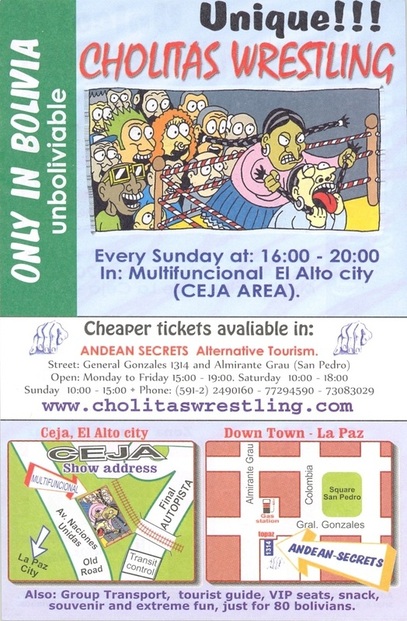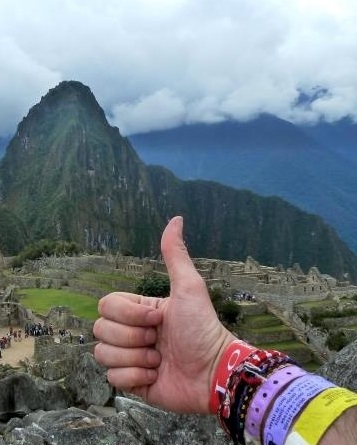Not surprisingly, by far the most popular tourist attraction in La Paz was riding a bike down “death road” [which I have written on briefly, before]. Officially known as Yungas [Jungle] Road, this 38-mile road leads from La Paz to the city of Coroico. It was built as a single lane width gravel road in the nineteen-thirties, and includes some overhangs of 1800 feet with no guardrails. It is estimated that between two hundred and three hundred vehicles have plummeted off the road, leading the Inter American Development Bank to bestow on it the title of World’s Most Dangerous Road. Particularly hazardous portions of the road were closed in 2006, leaving it open to biking tours. Despite the fact that about 20 cyclists have died on the road since 1998, it remains popular because of the amazing scenery it provides, and the simple sentiment that “you can’t find this anywhere else.”
There was a seeming refusal on the travelers’ parts to believe that the death road was truly dangerous, despite the fact that several people per month were sent to the hospital after minor falls, and one woman even died while biking during my time in La Paz. Cater argues that “the prime motivation for the practice of adventure is thrill and excitement.” Beck further suggests that even though adventure experiences are understood within a discourse of risk, tourists that engage in them have no desire to actually be harmed. Instead, it is the unpredictability of the experience that attracts them. As one German woman proclaimed on facebook, “Today I survived the World’s Most Dangerous Road. Just like 50 other people every day.” Much like exotic animals, crazy tour guides, and death-defying bike rides, “cholitas” wrestling fulfills the need for an epic and hazardous journey into the unknown exotic continent of South America and legendary stories to tell other backpackers and friends at home, upon return.
I concur with Adler’s assertion that travel is a “performed art” which includes the anticipation and daydreaming that precede the journey as well as reflection during and after the journey. Molz points out that these performances include the consumption of symbolic items that allow travelers to perform and recognize each other as legitimate. Indeed, while tourism may expose travelers to “traditional” cultural practices, their consumption behaviors are motivated by the desire to possess a symbol of those cultural practices. And while an ugly llama sweater may be requisite attire in the Ekko bar, consumption also includes the accumulation of non-commodified symbols, such as photographs or the identification bracelets from hostels that many travelers collect on their wrists. The photographs, including those of the Cholitas Luchadoras, function as a friendly competition of evidencing the strange, unusual, exotic, and “risky” things travelers have seen on their trips.
1989 Travel as Performed Art. American Journal of Sociology, 94:1366-1391.
Beck, Ulrich
1992 Risk Society: Towards a New Modernity. Thousand Oaks, CA: Sage.
Cater, Carl I.
2006 Playing with risk? participant perceptions of risk and management implications in adventure tourism. Tourism Management 27(2):317-325.
Molz, Jennie Germann
2006 Cosmopolitan Bodies: Fit to Travel and Traveling to Fit. Body Society 12:1-21.




 RSS Feed
RSS Feed
